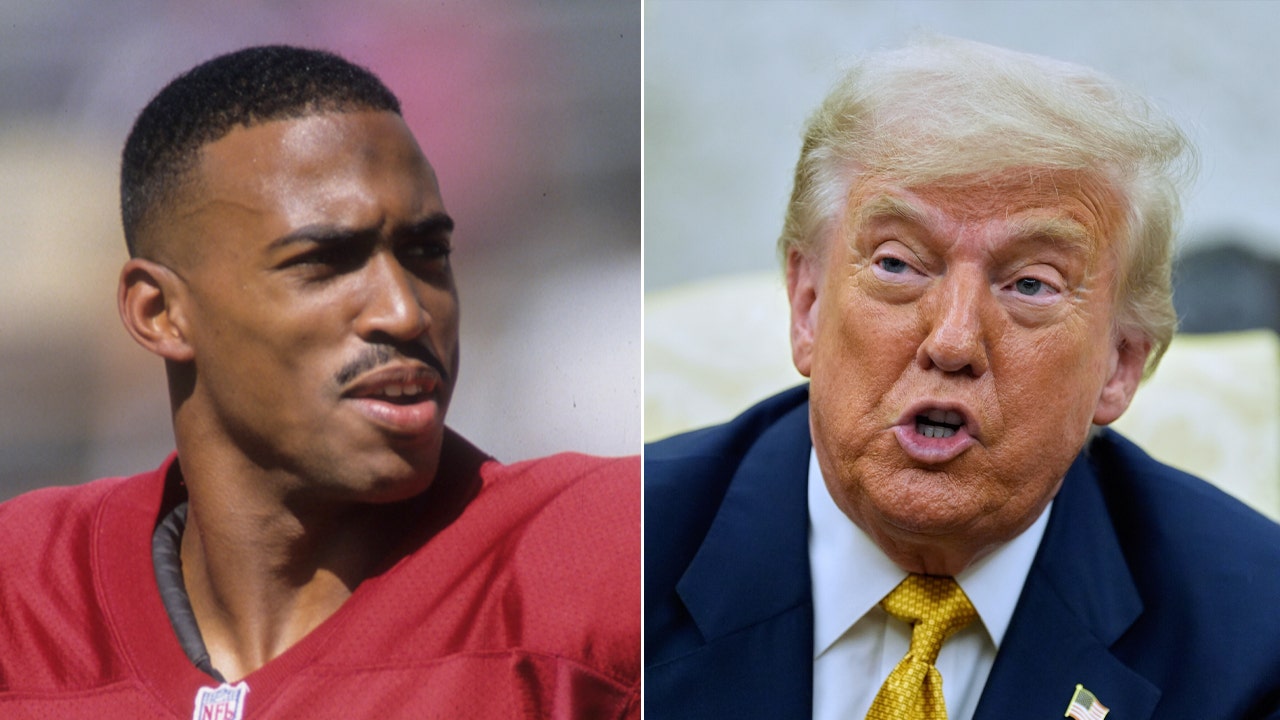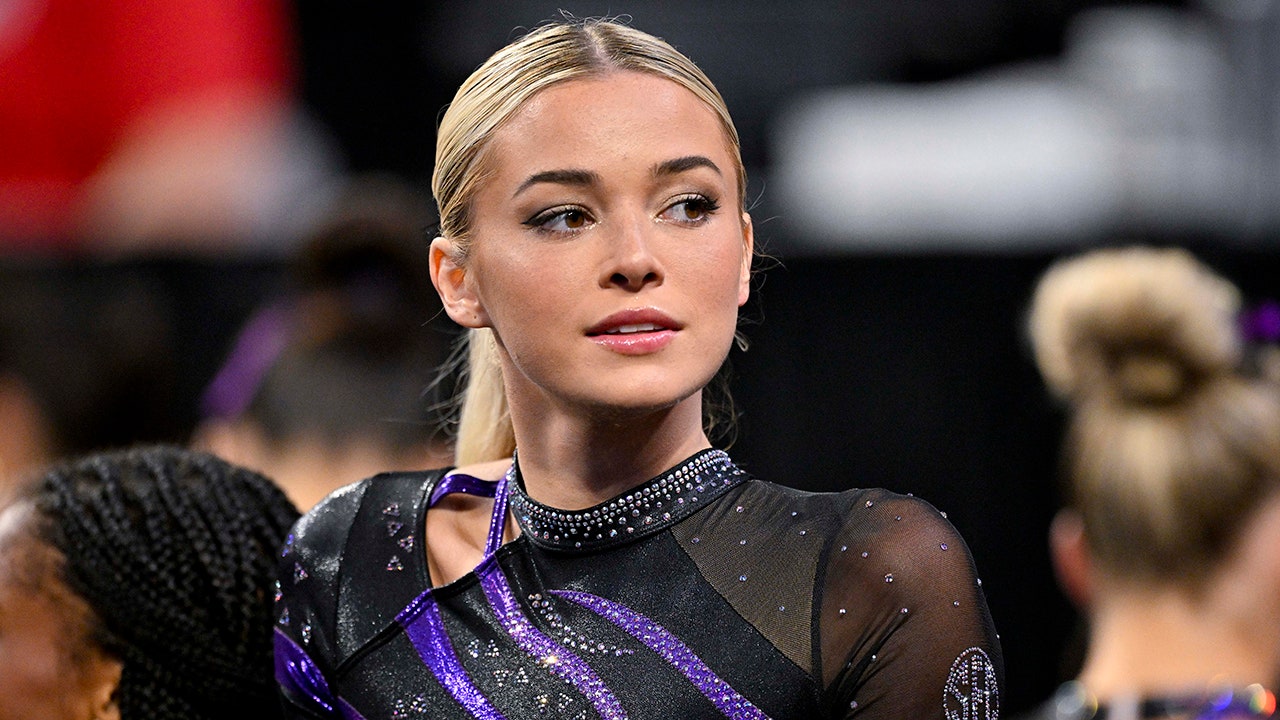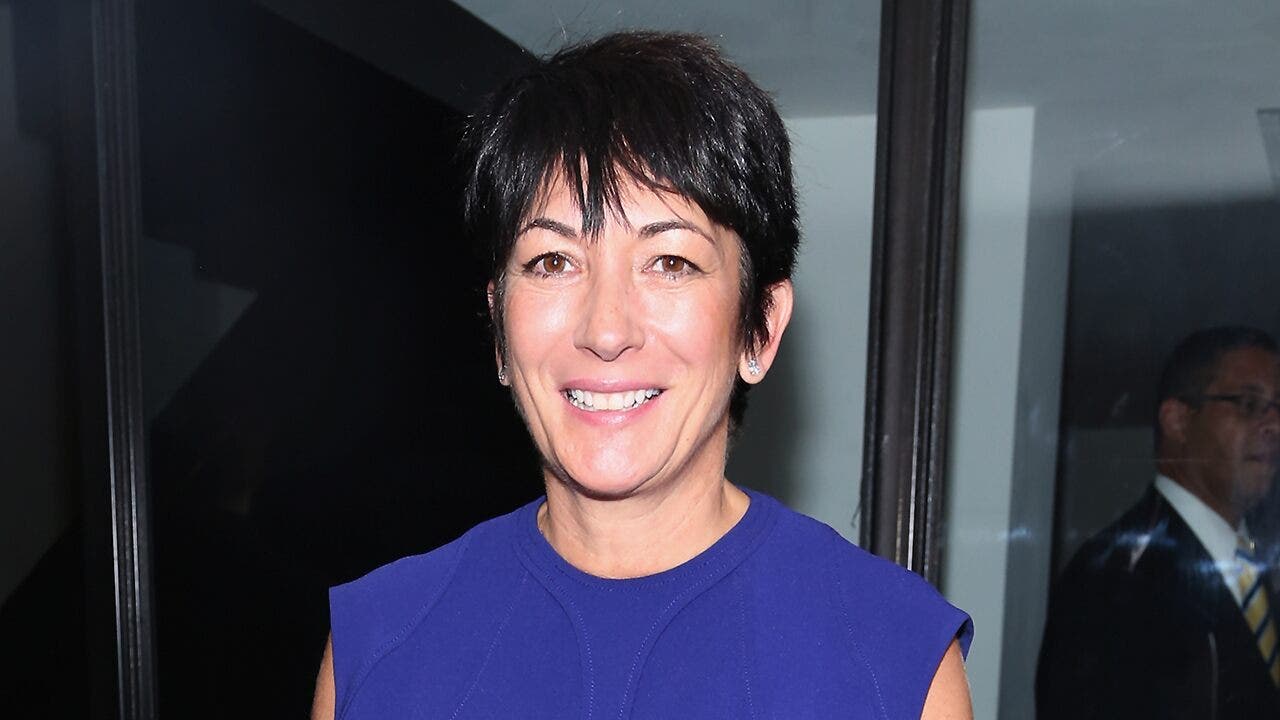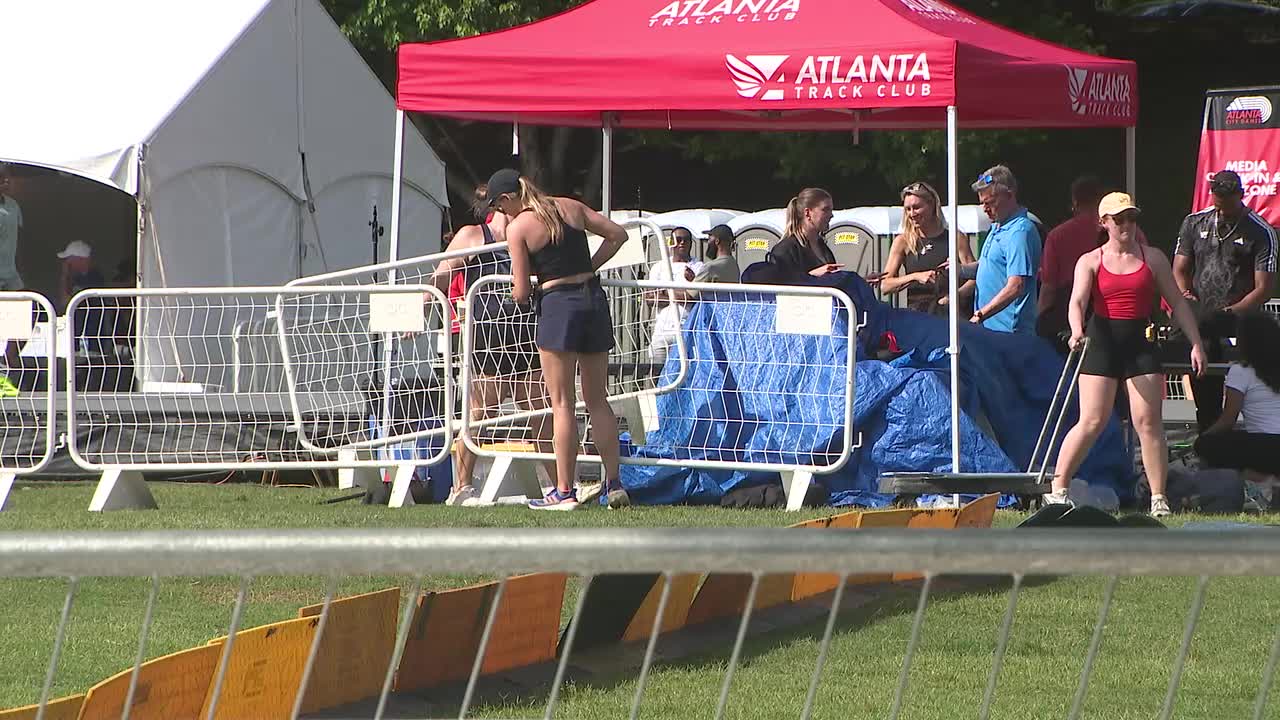Sports
What makes Leon Marchand a superstar? He's smaller, lighter and unbelievable underwater

Leon Marchand is an enigma.
Over the past eight days, he has produced one of the best Olympic pool displays. It featured an unprecedented double gold in the 200m breaststroke and 200m butterfly.
Only one athlete had ever made the final in both strokes over any distance. That was Mary Sears in 1956, with the American winning bronze in the 100m butterfly and finishing seventh in the 200m breaststroke.
Marchand, who also won the 200m and 400m individual medleys, took four individual golds in four Olympic record times. Those performances are not normal, even by elite standards. The 22-year-old is the fourth swimmer and first French Olympian with four individual golds in one Games — joining the United States’ Mark Spitz (1972), East Germany’s Kristin Otto (1988) and the U.S.’s Michael Phelps (in 2004 and 2008).
The Marchand-Phelps comparisons write themselves. Marchand’s coach at Arizona State University, Bob Bowman, previously coached Phelps. In early 2023, Bowman said, “Leon is reminding me of Michael in 2003.” Bowman was talking about what Leon swam, not how he swam it, praising his ability to produce fast race times despite high training volumes.
Physically, Marchand is more like Spitz than Phelps. Phelps is six centimetres (2.4in) taller (193cm versus 187cm) and raced seven kilograms heavier (84kg compared to 77kg) than the Frenchman. Marchand isn’t matching the American’s 79-inch wingspan. Part of Marchand’s allure is how he bucks the trend of Olympic swimmers getting bigger and taller.
GO DEEPER
Meet Léon Marchand, the ‘French Michael Phelps’ ready to rule his home Olympics
A 2020 paper collated nine studies analysing Olympic swimmers between 1968 and 2016. It was “advantageous for swimmers to be older, taller, and heavier”. From Mexico City in 1968 to Rio de Janeiro in 2016, world-class men’s 200m swimmers (Marchand’s favourite distance) changed drastically: on average, they became 8.6cm taller and 7.9kg heavier.
The authors of that paper spoke of the “natural selection” of athletes into events based on their body types and suitability for strokes. Freestyle swimmers were the biggest, all about power and big, long limbs. Butterfly swimmers were the smallest, with back and breaststroke swimmers in the middle. Imagine a Venn diagram where Phelps sits in the overlapping free/fly/back rings, and Marchand in breast/fly/back.
Francisco Cuenca-Fernandez, a PhD graduate from the aquatics lab at the University of Granada and a professor with a research specialism in race analysis, explains how Marchand’s atypical size is advantageous.
“Swimmers are usually large because a large body is associated with a long lever arm, which is very beneficial as it allows propulsive surfaces, like the hands, to stay underwater longer, applying force.”
But that bulk is a double-edged sword. “This has a downside,” says Cuenca-Fernandez. “A large body can also generate much more resistance. In Marchand’s case, his events have always been middle-distance — the 200m and 400m — which indicates that a large, muscular body would have been very energy-consuming.
“We haven’t seen him compete individually in the 100m butterfly or 100m breaststroke and he hasn’t stood out in his freestyle relay performances either. He is a swimmer who doesn’t stand out for his height or musculature, but this makes him incredibly efficient.”
Efficiency.
It was the difference between Marchand and Hungary’s Kristof Milak in the 200m butterfly final, where sprint specialist Milak led at 150m but Marchand’s back-end speed saw him close hard. Cuenca-Fernandez uses that word repeatedly to describe Marchand.
“He moves easily and this saves a lot of energy. This is where he’s making the difference,” says Cuenca-Fernandez, who roots Marchand’s efficiency in a combination of his training under Bowman and innate physiology, a virtue of having former Olympian parents.
It is how Marchand breaks his opponents in the medley, with his strongest strokes first (fly) and third (breaststroke) and his weakest second (back) and last (free). “This efficiency is maximized in butterfly and breaststroke, which are strokes where it’s challenging to maintain cadence since the body is constantly accelerating and decelerating, leading to quick fatigue,” says Cuenca-Fernandez.

Marchand in the semi-final of the 200m butterfly event in Paris (Sebastien Bozon/AFP via Getty Images)
Breaststroke is leg-dominant, too, so guys with big upper bodies and wingspans benefit less. “It’s evident that his race strategy is based on being strong in these two strokes,” says Cuenca-Fernandez, explaining that Marchand’s natural strengths work tactically.
“Start strong in butterfly, using powerful undulation (wave-like movements with the body). In backstroke, maintain position, since I can breathe much more easily than in the other strokes. In breaststroke, I take advantage of my underwater efficiency, both in the underwater phase after pushing off the wall and the gliding phase, and push hard again. In freestyle, I give whatever I have left, less fatigued than others.”
Marchand’s efficiency — combined with elite conditioning — makes him so good underwater. He glides and kicks like nobody else. In the 200m breaststroke final, he was 1.8m up on second-place Zac Stubblety-Cook at the final turn but stayed underwater for so long that he surfaced after his nearest opponent even further in the lead.
In the 400m individual medley, Marchand spent 100m of that gliding underwater, around one-fifth more than his opponents — Phelps spent 77m underwater in the same race in Beijing in 2008. Marchand spent 14.77m of the allowed 15m underwater off the final turn when he set the 400m individual medley world record in Japan last year.
“That incredible underwater swimming is a characteristic of swimmers trained by Bowman,” says Cuenca-Fernandez. Even Phelps is astounded by Marchand’s glides. Bowman once said they were “not a subject, they have always been excellent”. Marchand is built to swim underwater, with what Bowman calls a torpedo-like body and “no hips”.
Cuenca-Fernandez says: “The depth of his underwater undulation stands out — this trajectory towards the bottom of the pool after the push-off from each turn.
“This provides an advantage — as long as you have the lungs for it — the reduction of wave resistance. When a group of swimmers reach the wall at full speed to turn, there is a mass of water dragged that ends up crashing against the wall.
“If your turn is too close to the surface and you are a little ahead of your competitors, that mass of water hits you just as you are flipping or starting your push-off and slows you down. However, if after your turn you go to the bottom of the pool, that mass of water passes over you and you manage to avoid it.”
It depends on the athlete — specifically their build and strength in swimming on the surface — but underwater swimming is typically faster as turbulence and drag are reduced (although this doesn’t apply to free, where surface swimming is faster than back, fly and breaststroke).
In one of Cuenca-Fernandez’s studies, assessing performance variability of swimmers going through championship rounds, they identified that the push-off in the first five metres from the turns was the only consistent variable. Things like stroke volume, start, and underwater kick all changed.
“The ones who reached the finals were always faster, they had better underwater gliding skills and offered less resistance,” he says. “The speed of that push-off was always the same for a given swimmer. I’m sure that if we analyze Marchand in depth, he would be one of the fastest at that point since he is a swimmer who generates very little resistance.”
Marchand’s style is something psychologists call an underdog effect — when athletes succeed despite disadvantages. Often these are sociocultural, economic or geographical, none of which apply to Marchand, but he is a fourth-quartile baby (May) and, physically, matured late.
Santiago Veiga Fernandez, a former head coach of the Spanish Swimming National Youth Team, with a PhD in swimming race analysis, explains it. Marchand, he says, benefitted from “great developmental work” by his French home coach Nicolas Castel from the Toulouse Dolphins club. During his junior years — 16 to 18 — Marchand developed the basic skills that allowed him to excel underwater.
“When competing at European or World Junior Championships, Marchand did not dominate. He was a bronze medallist at a couple of events (European bronze in 200m breaststroke and 400m individual medley; world bronze in 400m individual medley). His body was not fully developed, but he already showed great levels of skill for gliding and underwater swimming.”
He had to be good at gliding underwater — he didn’t have freestyle power or speed anywhere near that of Phelps. Marchand’s 100m free personal best is almost four seconds slower, although he’s a better freestyler than Phelps was a breaststroker (Marchand’s 200m personal best at breaststroke is more than five seconds faster than Phelps’).
Scheduling is a significant reason the breaststroke/fly double is unique, as they happen in the same evening session, which forces specialism in one (World Aquatics actually had to change the Olympic schedule to let Marchand attempt it).
Another reason, Veiga explains, is technique differences. “The kicking action in butterfly and breaststroke are quite the opposite and swimmers with a great range of motion in one stroke may not excel in the other.
“In breaststroke, you can only perform one underwater dolphin kick after diving off the block or pushing off the turning wall, whereas in butterfly, swimmers can perform multiple underwater dolphin kicks.”
These kicks require the feet to flex in different ways (because the arm strokes are different). It might seem small, but at the highest level, details make performance differences.

Marchand in the butterfly heats (Quinn Rooney/Getty Images)

And in the breaststroke final, emphasising the difference in technique (Ian MacNicol/Getty Images)
Given his exponential progression since Tokyo, the thoughts of where Marchand might be in four years are scary. Improve his freestyle and the world records will tumble. Veiga says that the 200m breaststroke showed Marchand becoming a versatile racer, as he swam hard from the off to compensate for Stubblety-Cook’s fast final 50m, rather than winning it late himself.
Ultimately, Marchand has put French swimming in a better place. They didn’t take a gold in the pool at the last two Games and managed four medals combined in Tokyo and Rio de Janeiro, as many as Marchand has in Paris alone.
France’s golden boy has changed the face of swimming. There’s more than one way to win an Olympic gold. Or four…
(Top photo: Adam Pretty/Getty Images)

Sports
Scott Turner, HUD secretary and ex-Redskins player, backs Trump's pressure on Commanders to bring back moniker

NEWYou can now listen to Fox News articles!
President Donald Trump received support from Department of Housing and Urban Development (HUD) Secretary Scott Turner amid the push for the Washington Commanders to ditch its current nickname in favor of the Redskins.
Turner was an NFL defensive back for eight years. He played for the Washington Redskins, San Diego Chargers and Denver Broncos from 1995 to 2003 before he called it a career.
Scott Turner of the Washington Redskins looks on during a game against the Arizona Cardinals at Sun Devil Stadium in Tempe, Arizona. (Getty Images)
He wrote a message in reply to Trump on Sunday.
“I played in the NFL and was drafted by the Washington Redskins. Not the ‘Washington Football Team’ or the ‘Commanders,’” he wrote on X. “@POTUS is right. It’s time to bring the Redskins’ name back.”
The Redskns selected Turner in the seventh round of the 1995 draft. He played three seasons in Washington. He had 106 tackles and five interceptions in his career.
Trump put the blitz on the Commanders, and the Cleveland Guardians of MLB, on Sunday with two Truth Social posts.
“The Washington ‘Whatever’s’ should IMMEDIATELY change their name back to the Washington Redskins Football Team. There is a big clamoring for this,” Trump wrote first. “Likewise, the Cleveland Indians, one of the six original baseball teams, with a storied past.
“Our great Indian people, in massive numbers, want this to happen. Their heritage and prestige is systematically being taken away from them. Times are different now than they were three or four years ago. We are a Country of passion and common sense. OWNERS, GET IT DONE!!!”
Then, he threatened to put the Commanders’ deal to take over the old RFK Stadium site in jeopardy if they didn’t revert to the name.

Scott Turner #29 of the Washington Redskins watches from the sideline against the Arizona Cardinals at Sun Devil Stadium in Tempe, Arizona on October 15, 1995. (Joseph Patronite/Getty Images)
SUPER BOWL CHAMP SAYS HE’D ASK TRUMP TO HELP GET REDSKINS NICKNAME BACK
“My statement on the Washington Redskins has totally blown up, but only in a very positive way,” Trump wrote in a second Truth Social post. “I may put a restriction on them that if they don’t change the name back to the original ‘Washington Redskins,’ and get rid of the ridiculous moniker, ‘Washington Commanders,’ I won’t make a deal for them to build a Stadium in Washington. The Team would be much more valuable, and the Deal would be more exciting for everyone.”
Daniel Snyder changed Washington’s team name from the Washington Redskins to the Washington Football Team before the start of the 2020 season amid a summer of racial tensions. The team eventually became the Washington Commanders, and Snyder sold the team to Josh Harris.
Fox News Digital reached out to the Commanders for comment. Harris has made clear he has no intention of changing the nickname again.
Harris said on Fox News Channel’s “Special Report” in April that the team would not bring back the Redskins name even with plans to build a new stadium in Washington, D.C.

Owner of the Washington Commanders team Josh Harris speaks at an event unveiling plans to host the 2027 NFL Draft in DC with President Donald Trump in the Oval Office of the White House on May 5, 2025 in Washington, DC. (Annabelle Gordon for The Washington Post via Getty Images)
“The Commanders’ name actually has taken on an amazing kind of element in our building,” Harris responded to Bret Baier’s question about the Redskins name coming back as part of this new stadium deal. “So, the people that certain types of players that are tough, that love football, are delegated Commanders and Jayden [Daniels], for example, is a Commander, and they’re ranked.
“And, you know, the business staff has gotten into it, and obviously, we’re in a military city here. There’s more military personnel than anywhere else, so we’re kind of moving forward with the Commanders name, excited about that, and not looking back.”
Fox News’ Scott Thompson contributed to this report.
Follow Fox News Digital’s sports coverage on X and subscribe to the Fox News Sports Huddle newsletter.
Sports
Freddie Freeman injured as Dodgers are swept by the Milwaukee Brewers, again

The Dodgers held their annual Family Day on the field at Dodger Stadium on Sunday, rolling food trucks, bounce houses and a climbing wall onto the warning track in left field. Few of the players seemed to be in a festive mood, however.
That’s because the Dodgers warmed up for Family Day with a 6-5 loss to the Milwaukee Brewers, the team’s third straight loss and the 10th in 12 games in which they’ve been outscored 71-36. It’s the team’s worst 12-game skid since 2018.
The loss was also the sixth in as many tries against the Brewers in the last two weeks, making Milwaukee the first team to sweep a season series of more than four games from the Dodgers in 20 years.
“Guys are getting frustrated,” manager Dave Roberts said. “You see kind of more emotion coming in. We just haven’t played good baseball.”
But it gets worse: the Dodgers (58-42) might have lost first baseman Freddie Freeman for a spell. Freeman, who is among the team leaders in batting average (.292) and is third in runs (47) and hits (95), sustained a left wrist contusion after being hit by a José Quintana pitch in the sixth inning. Roberts said X-rays on Freeman’s wrist were negative and the first baseman is considered day to day.
“That one, I held my breath,” Roberts said. “I think we all did, because, you know, when you’re scuffling and to potentially lose a guy for four-to-six weeks is obviously very scary.”
In Freeman’s absence, catcher Dalton Rushing could play at first base.
As for the rest of what ails the Dodgers, that could be a lot harder to fix.
On Sunday they made three errors, leading to two unearned runs. They gave up the lead twice and Mookie Betts lined out to center with the bases loaded to end the game.
“We’ve got to figure it out. We’ve got to play better,” Betts whispered in an empty clubhouse after going one for five, leaving him with a .189 average in July and as many strikeouts as hits.
Across the room Clayton Kershaw cut short a scrum with reporters. He pitched well enough Sunday, but his day was undone in a three-run Milwaukee fourth in which a Tommy Edman throwing error and a fielding error by Andy Pages gave the Brewers two runs and forced Kershaw to throw 29 pitches.

Dodgers pitcher Clayton Kershaw delivers in the fifth inning Sunday against the Brewers.
(Robert Gauthier / Los Angeles Times)
“I’m frustrated. We’re all frustrated. I don’t know how else to say it,” said Kershaw, who was visibly angry after being pulled from the game in the fifth inning. “We didn’t win a game. No excuses. We’ve just got to play better.
“I don’t have much to say,” he added. “I’m going to get myself in trouble. So let’s just call it.”
The Dodgers gave Kershaw an early lead with a three-run third inning, the big blow a two-run homer by Shohei Ohtani, his 34th of the season. The defense gave all three runs back in the fourth, however.
“It’s frustrating,” Roberts repeated. “That’s the word everyone uses when things aren’t going well, but you also have to make your own breaks. And when things are tough, you can’t do things to sabotage yourself. Today, specifically, it was the defense.”

Hyeseong Kim slides safely into first, beating the tag of Milwaukee Brewers first baseman Andrew Vaughn on a pickoff attempt in the sixth inning Sunday.
(Robert Gauthier / Los Angeles Times)
Esteury Ruiz’s first home run for the Dodgers put them back in front in the fifth, but the Brewers (59-40) went in front to stay in the sixth, scoring three times off relievers Alex Vesia and Lou Trivino (3-1) on a double, three singles and a walk.
The Dodgers’ bullpen earned-run average of 4.39 ranks 12th in the National League. The team hasn’t gotten a scoreless game from its bullpen since July 3.
“You’ve got to kind of find a way to reset,” Roberts said before heading back up the dugout steps for Family Day. “Come back fresh tomorrow and play good baseball.”
Snell and Treinen continue rehab
Pitchers Blake Snell and Blake Treinen made rehab appearances for triple-A Oklahoma City on Sunday.
Snell, who has been on the injured list since April 6 because of left shoulder inflammation, made 58 pitches over four innings, giving up a run on four hits while striking out six. It was his third rehab appearance.
Treinen, out since April 19 with a forearm strain, followed with a perfect fifth inning in which he struck out two. He could return to the Dodgers’ roster this week.

Sports
Olivia Dunne opens up about gruesome injury that shattered Olympic dreams

NEWYou can now listen to Fox News articles!
Former LSU Tigers gymnast Olivia Dunne opened up about a gruesome injury she suffered when she was younger that essentially shattered her dreams of becoming a U.S. Olympian.
The New Jersey native began her foray into elite gymnastics in 2014 and was added to the national team and began to work her way up to the senior elite level before committing to LSU, where she earned a national championship with the program before her collegiate career ended.
LSU Tigers gymnast Olivia Dunne looks on during the 2025 Women’s National Gymnastics Semifinal at Dickies Arena on April 17, 2025. (Jerome Miron-Imagn Images)
Dunne explained on “What’s Your Story? With Stephanie McMahon” that she suffered the devastating injury in 2018.
“I was actually competing on a hurt ankle at the 2018 USA Championships and, yeah, part of my ankle bone died. … Yeah, it just died. So, my Olympic dreams died with it,” she said. “It kind of healed a little bit. It stopped bothering me. I went to college after that, but it was so painful. That was kind of my first real injuries.
“I’ve actually never gotten any surgery, which is kind of crazy for a gymnast. And I was like, I think if I just give myself time to heal, I can heal without surgery. But that’s something I take pride in. I have never needed surgery as a gymnast, which is very uncommon.”

Olivia Dunne of the LSU Tigers warms up at the Dickies Arenas for the NCAA Championship on April 20, 2024 in Fort Worth, Texas. (Chris Parent/LSU/University Images via Getty Images)
SUNI LEE DISCUSSES OLYMPIC RETURN AFTER KIDNEY DISEASE DIAGNOSIS, ESPYS COMEBACK ATHLETE NOMINATION
Dunne was able to compete at LSU until an injury ultimately derailed her final year at the program.
She has been one of the most-followed athletes on social media since she joined LSU. She boasts more than 8 million followers on TikTok and another 5.4 million on Instagram. She helped the Tigers to a national championship in 2024, but her final year with LSU was derailed because of an injury.

LSU Tigers’ Olivia Dunne looks on during the meet against the Georgia Bulldogs at Maravich Center in Baton Rouge, Louisiana, on March 7, 2025. (Stephen Lew-Imagn Images)
Since then, she’s been spotted cheering on her boyfriend, Paul Skenes, as he makes waves in MLB with the Pittsburgh Pirates.
Follow Fox News Digital’s sports coverage on X, and subscribe to the Fox News Sports Huddle newsletter.
-

 World1 week ago
World1 week agoVirgin River Renewal Tees Up New Mystery for Mel and Jack in Season 7
-

 Iowa1 week ago
Iowa1 week ago8 ways Trump’s ‘Big, Beautiful Bill’ will affect Iowans, from rural hospitals to biofuels
-

 Politics1 week ago
Politics1 week agoConstitutional scholar uses Biden autopen to flip Dems’ ‘democracy’ script against them: ‘Scandal’
-

 Movie Reviews1 week ago
Movie Reviews1 week agoMovie Review: SUPERMAN
-

 Politics1 week ago
Politics1 week agoDOJ rejects Ghislaine Maxwell’s appeal in SCOTUS response
-

 Health1 week ago
Health1 week agoNew weekly injection for Parkinson's could replace daily pill for millions, study suggests
-

 Culture1 week ago
Culture1 week agoTest Your Knowledge of French Novels Made Into Musicals and Movies
-

 News1 week ago
News1 week agoSCOTUS allows dismantling of Education Dept. And, Trump threatens Russia with tariffs




















